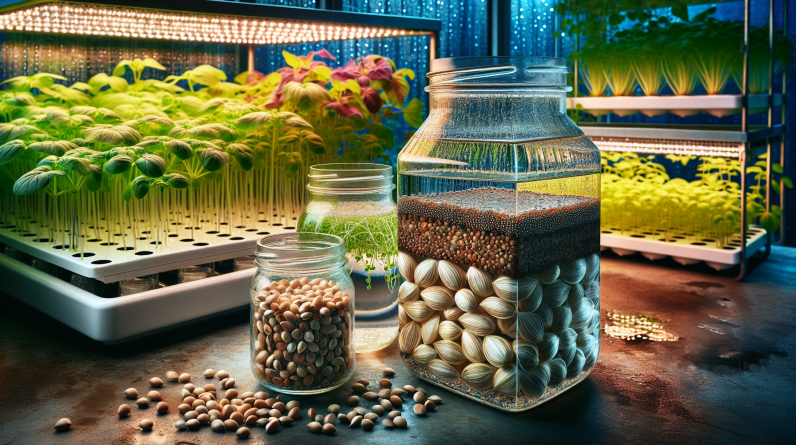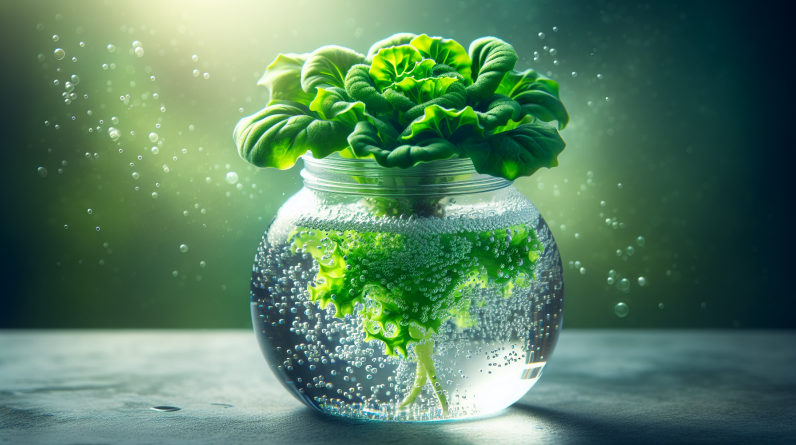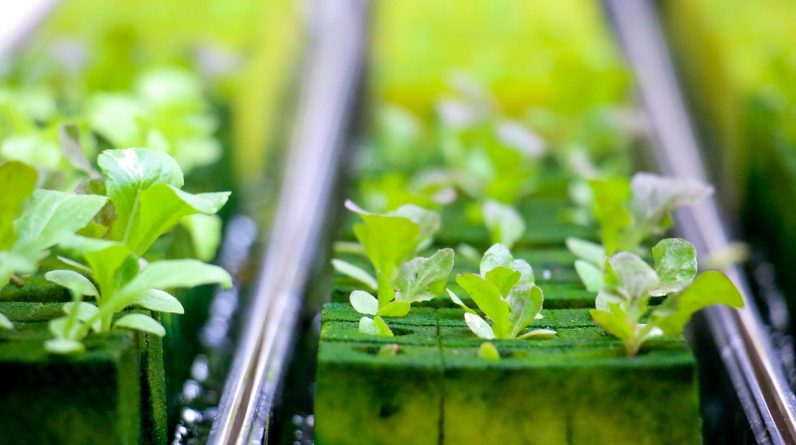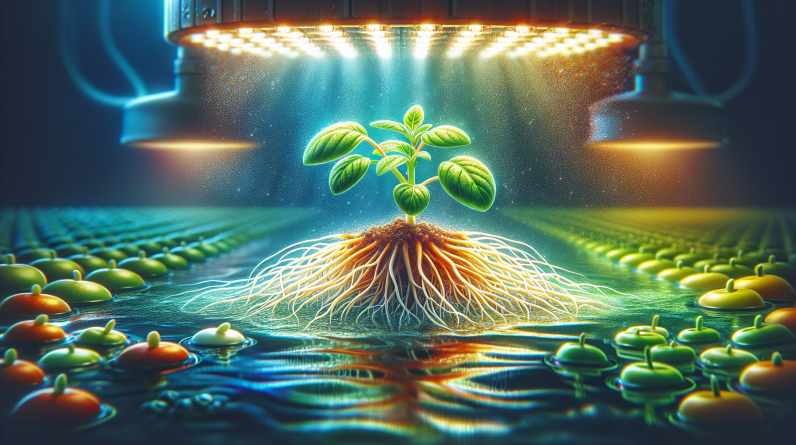
You’re probably wondering if it’s possible to speed up the growth of plants. Well, the good news is that it is indeed possible! In this article, we will explore fascinating methods and techniques that can be used to accelerate the growth process of plants. Whether you’re a gardener, a farmer, or simply a plant enthusiast, these tips and tricks will surely help you achieve faster and more bountiful growth in your beloved greenery. So, let’s dig in and unlock the secrets to maximizing the potential of our plant friends!
Factors Affecting Plant Growth
When it comes to the growth and development of plants, there are several factors that play a crucial role. These factors influence the overall health, productivity, and appearance of plants. By understanding and managing these factors, gardeners, farmers, and plant enthusiasts can ensure optimal plant growth and achieve desired results.
Light
Light is an essential factor for the growth of plants. It is the primary source of energy for photosynthesis, the process through which plants convert light energy into chemical energy to fuel their growth. Light also influences other aspects of plant growth, such as flowering, fruiting, and leaf development.
Importance of Light for Plant Growth
Plants require light to initiate photosynthesis, which is vital for their survival. It is through this process that plants synthesize glucose, the primary source of energy for growth and development. Light also helps plants produce chlorophyll, the pigment responsible for photosynthesis. Without adequate light, plants may exhibit stunted growth, weak stems, pale or yellowing leaves, and reduced fruit formation.
Light Intensity and Duration
The intensity and duration of light are crucial factors that affect plant growth. Different plants have different light requirements, and the availability of light can vary depending on the location and time of year. Some plants thrive in direct sunlight, while others prefer shade or partial shade. It is important to research and understand the specific light requirements of the plants you are growing to ensure optimal growth.
Providing Adequate Light
To ensure proper light availability, consider the placement of your plants and the positioning of light sources. For indoor plants, placing them near windows or using artificial grow lights can help provide the necessary light. Outdoor plants should be situated in areas where they receive the appropriate amount of sunlight for their specific needs. Regularly monitor the lighting conditions and make adjustments as needed to optimize plant growth.
Water
Water is another crucial factor that directly influences plant growth. It serves as a medium for nutrient uptake, facilitates photosynthesis, and helps regulate plant temperature through transpiration. Insufficient or excessive water can negatively impact plant health and growth.
Role of Water in Plant Growth
Water plays a vital role in plant growth as it is essential for various physiological processes. It acts as a transport medium, delivering nutrients and minerals from the soil to different parts of the plant. Water also provides structural support, aiding in maintaining turgidity and preventing wilting. Additionally, it regulates temperature through evaporation, ensuring plants do not overheat.
Watering Techniques
Proper watering techniques are important to ensure optimal plant growth. The frequency and amount of water needed can vary depending on plant species, environmental conditions, and soil type. It is important to water plants deeply, ensuring that the entire root zone is adequately hydrated. Avoid overwatering, as it can lead to waterlogging and root rot, or underwatering, which can cause drought stress. It is best to water early in the morning or late in the evening to reduce water loss through evaporation.
Irrigation Systems
In larger agricultural settings or gardens, irrigation systems can be employed to efficiently and effectively provide water to plants. These systems can include sprinklers, drip irrigation, or soaker hoses, among others. By using these systems, water can be evenly distributed across the planting area, reducing water waste and ensuring proper hydration for optimal plant growth.
Temperature
Temperature is a significant factor that affects the growth and development of plants. Different plants have specific temperature ranges within which they thrive, and deviations from these optimum ranges can have adverse effects on plant growth.
Influence of Temperature on Plant Growth
Temperature affects various physiological processes in plants, such as photosynthesis, respiration, and transpiration. It influences the rate of enzymatic reactions, which are essential for plant growth and metabolism. Extreme temperatures, either too hot or too cold, can disrupt these processes and lead to reduced growth and even plant death.
Optimal Temperature Range
Each plant species performs best within a specific temperature range. For example, tropical plants thrive in warm temperatures, while cool-season plants prefer cooler temperatures. Understanding the temperature requirements of the plants you are growing is essential for providing suitable growing conditions and maximizing growth.
Controlling Temperature
To control temperature, gardeners and farmers can use various strategies depending on the environment in which they are growing plants. In colder climates, greenhouse structures can be used to create a controlled environment, ensuring optimal temperatures for plant growth. In warmer climates, shading techniques or protective coverings can help reduce excessive heat and prevent damage. Additionally, mulching around plants can help regulate soil temperature and prevent temperature fluctuations.
Nutrients
Nutrients are essential substances that plants require for growth, development, and overall health. These include macronutrients, required in large quantities, and micronutrients, needed in smaller quantities. Adequate nutrient availability is crucial for optimal plant growth.
Essential Plant Nutrients
Plants require a range of essential nutrients to carry out their metabolic processes effectively. These nutrients include nitrogen (N), phosphorus (P), potassium (K), calcium (Ca), magnesium (Mg), and sulfur (S), among others. Each nutrient plays a specific role in plant growth, such as promoting root development or enhancing flower production.
Macronutrients and Micronutrients
Macronutrients are required by plants in larger quantities compared to micronutrients. They are essential for plant growth and are typically represented by the abbreviations NPK, which stand for nitrogen, phosphorus, and potassium. Micronutrients, on the other hand, are needed in smaller amounts but are equally important for overall plant health. These include nutrients such as iron (Fe), manganese (Mn), zinc (Zn), copper (Cu), and boron (B), among others.
Importance of Soil Testing and Fertilization
Understanding the nutrient composition of the soil is critical for ensuring proper plant nutrition. Conducting soil tests can provide valuable information about the nutrient levels and pH of the soil, helping determine any deficiencies or imbalances. Based on the results, appropriate fertilization strategies can be employed to provide the necessary nutrients to plants. Organic and synthetic fertilizers can be used to supplement nutrient deficiencies and promote optimal plant growth.
Soil
Soil is the medium in which plants grow, providing support, moisture, and nutrients. The composition and quality of the soil greatly influence plant growth and overall plant health.
Soil Composition and Structure
Soil is made up of various components, including minerals, organic matter, water, air, and living organisms. The mineral content of the soil, such as sand, silt, or clay, determines its texture. Soil texture affects water retention, drainage, and nutrient availability. The structure of the soil, referring to the arrangement of soil particles, also plays a role in plant growth.
Soil pH and Nutrient Availability
The pH of soil, a measure of its acidity or alkalinity, affects nutrient availability to plants. Different plants have specific pH requirements, and an imbalanced pH can restrict nutrient absorption. Some plants prefer acidic soils, while others thrive in alkaline or neutral soils. It is important to test and adjust soil pH to ensure optimal nutrient availability and uptake.
Soil Amendments and Improvements
To enhance soil fertility and structure, various soil amendments can be used. Organic matter, such as compost or manure, can improve soil structure, moisture retention, and nutrient availability. Adding organic matter can increase microbial activity in the soil, promoting nutrient cycling and overall soil health. Additionally, adding minerals or nutrients specific to the needs of the plants can help address deficiencies and improve plant growth.
Air
Air, specifically oxygen and carbon dioxide, is essential for plant growth and respiration. Adequate air circulation and oxygenation of plant roots are crucial for optimal plant growth.
Role of Air in Plant Growth
Plants require oxygen for their root respiration, which is essential for delivering energy to support growth and development. Oxygen facilitates the breakdown of glucose, produced during photosynthesis, into energy for plant cells. Carbon dioxide, on the other hand, is required for photosynthesis, where it is converted into glucose. Proper air circulation also helps prevent the buildup of excess humidity, reducing the risk of fungal diseases.
Oxygenation of Plant Roots
Roots require oxygen for their metabolic processes to occur. When soil becomes compacted or waterlogged, the availability of oxygen to roots decreases, leading to root suffocation and reduced plant growth. Proper aeration of the soil, especially in heavy or poorly drained soils, is important to ensure oxygen reaches the roots.
Proper Ventilation
In indoor gardening or greenhouse settings, ensuring proper ventilation is crucial. Proper air circulation prevents the buildup of excessive humidity, which can lead to fungal diseases. It also helps prevent the accumulation of stale air and provides a fresh supply of carbon dioxide for plants to perform photosynthesis efficiently.
Genetic Factors
Genetic factors also play a role in plant growth and development. These factors include the specific genetic makeup and traits of the plant species or cultivar being grown.
Genetic factors influence characteristics such as plant size, reproductive capacity, disease resistance, and adaptation to environmental conditions. Through selective breeding techniques or genetic modification, plants with desired traits can be developed to enhance their growth and improve their overall performance.
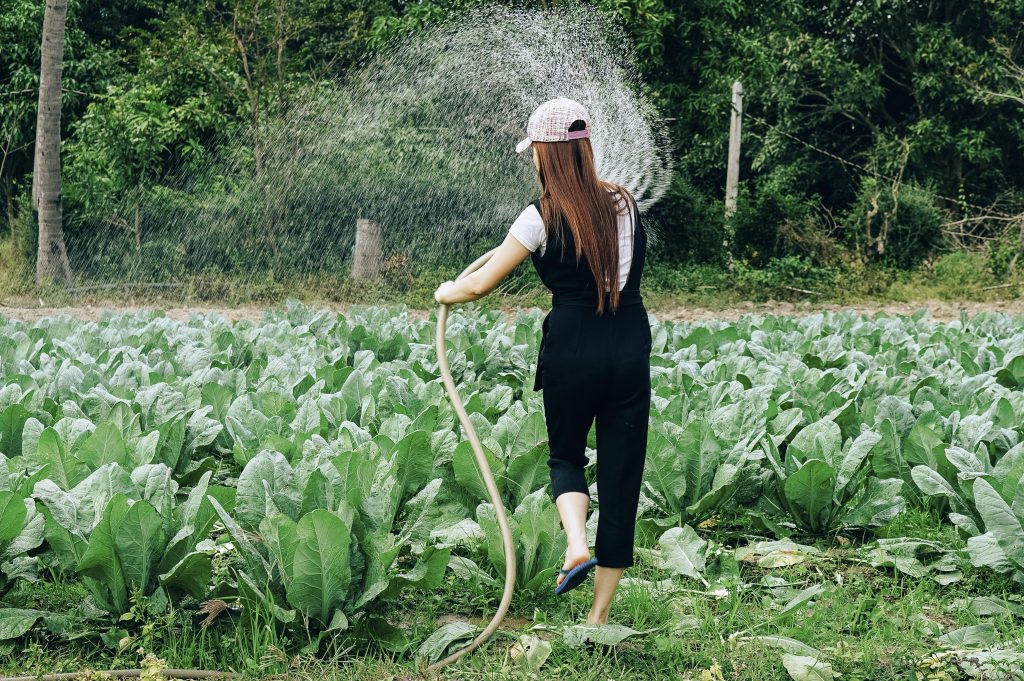
This image is property of images.unsplash.com.
Techniques to Enhance Plant Growth
In addition to understanding the various factors that affect plant growth, there are several techniques that can be employed to enhance the growth of plants. These techniques focus on providing optimal conditions, introducing genetic modifications, and using specific tools or methods to support plant growth.
Selective Breeding
Selective breeding is a technique used to develop plant varieties with desired traits through controlled mating or hybridization. By selecting plants with specific characteristics, such as disease resistance, yield, or flavor, and crossbreeding them, new plant varieties can be created that exhibit enhanced growth and performance.
Genetic Modification
Genetic modification involves introducing specific genes into a plant’s genetic makeup to enhance desired traits or improve its ability to grow in specific conditions. This technique allows for precise control over the genetic traits of plants, possibly leading to improved growth, pest resistance, or increased nutrient content.
Plant Hormones
Plant hormones, also known as phytohormones, are naturally occurring chemicals that regulate various aspects of plant growth and development. By applying specific plant hormones, such as auxins, cytokinins, gibberellins, or abscisic acid, gardeners and farmers can manipulate plant growth, promote root development, stimulate flowering, or regulate fruit formation.
Optimized Growing Conditions
Creating optimal growing conditions is crucial for maximizing plant growth. This includes providing the right amount of light, water, and nutrients, as well as maintaining suitable temperature and humidity levels. By adjusting and monitoring these conditions, plants can thrive and reach their full growth potential.
Proper Irrigation
Proper irrigation techniques ensure plants receive adequate water without overwatering or underwatering. This can be achieved through methods such as drip irrigation, soaker hoses, or using moisture sensors to monitor soil moisture levels. Consistent and appropriate watering provides plants with the necessary hydration, supporting healthy growth.
Organic and Synthetic Fertilizers
Fertilizers are used to supplement nutrient deficiencies in the soil and provide essential elements for plant growth. Organic fertilizers, such as compost, manure, or bone meal, are derived from natural sources and release nutrients slowly over time. Synthetic fertilizers, on the other hand, are chemically formulated and provide nutrients in a readily available form. Both types of fertilizers can be used to improve plant growth, depending on specific plant requirements and soil conditions.
Mulching
Mulching involves applying a layer of organic or inorganic material around plants to conserve moisture, suppress weed growth, regulate soil temperature, and improve soil fertility. Mulch can help retain soil moisture, reduce evaporation, and prevent weed competition, which can enhance plant growth and reduce the need for excessive watering or weeding.
Companion Planting
Companion planting involves growing different plant species together to achieve mutual benefits. Some plants have natural abilities to repel pests, attract beneficial insects, or improve soil fertility. By strategically planting compatible species together, gardeners can create synergistic relationships that promote plant growth and provide natural pest and disease control.
Synergistic Plant Combinations
Certain plant combinations have been found to benefit each other when grown together. For example, planting marigolds alongside tomato plants can help repel aphids and nematodes, enhancing the growth and health of the tomatoes. Similarly, growing basil near peppers can deter pests and attract pollinators. By selecting plant combinations that work well together, gardeners can support plant growth and overall plant health.
Pest and Disease Control
Companion planting can also aid in pest and disease control. Some plant combinations have been found to repel specific pests or attract beneficial insects that prey on pests. For example, growing nasturtiums near beans can deter aphids, while planting dill near cabbage can attract ladybugs, which feed on cabbage worms. By utilizing companion planting strategies, gardeners can minimize the need for chemical pesticides and promote natural pest control.
In conclusion, understanding the factors that affect plant growth and employing appropriate techniques to enhance growth are essential for successful gardening, farming, and landscaping. By providing adequate light, water, temperature, nutrients, soil conditions, air circulation, and considering genetic factors, plant enthusiasts can ensure optimal plant growth and achieve their desired results. Additionally, techniques such as selective breeding, genetic modification, plant hormone application, optimized growing conditions, proper irrigation, organic and synthetic fertilizers, mulching, and companion planting can further support and enhance plant growth. With this knowledge and implementation of suitable techniques, plants can be encouraged to grow faster and healthier, allowing gardeners and farmers to reap the benefits of abundant produce, vibrant flowers, and lush landscapes.
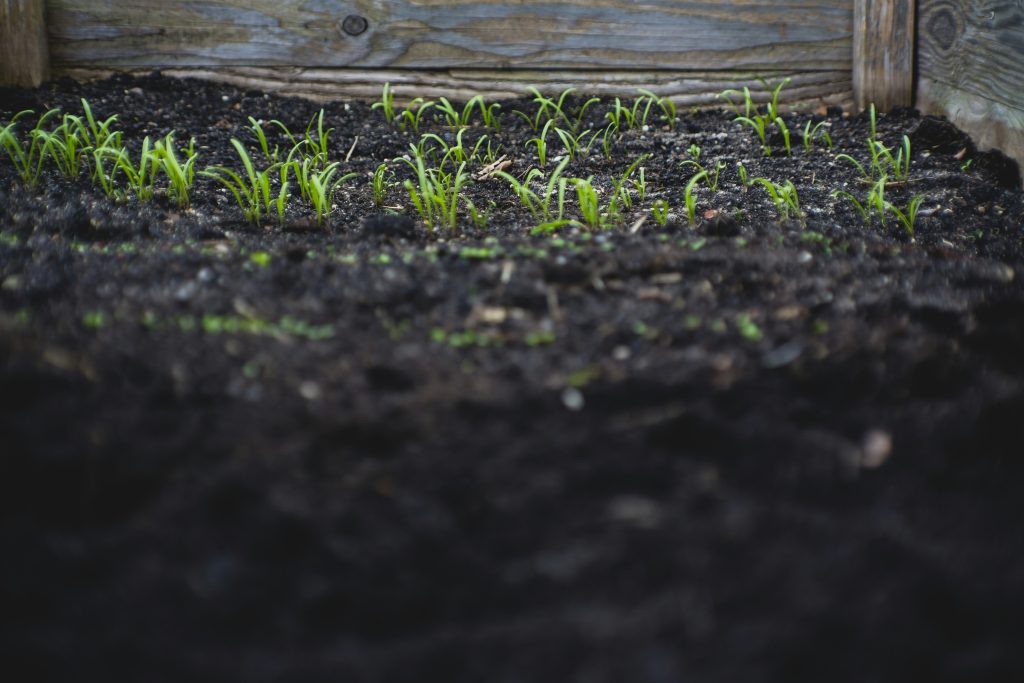
This image is property of images.unsplash.com.
Related Content
- The Ultimate Guide to 10 Effective Small Hydroponic System Strategies for 2025
- 7 Benefits of Hydroponic Farming
- iDOO Indoor Garden Hydroponics Growing System 12Pods WiFi Smart Garden Plant Germination Kit with LED Grow Light Review
- The Pros and Cons of Hydroponic Systems
- Ensure Success with Proper Hydroponic Water Quality Management



